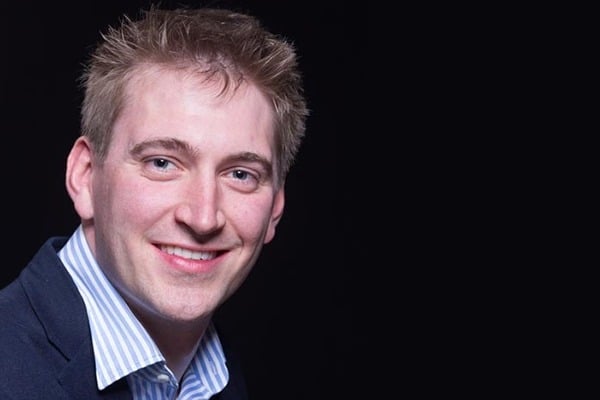Justus Kebschull joined the Johns Hopkins Department of Biomedical Engineering as an assistant professor in January 2021. In this interview, Kebschull discusses his research on organizational principles of vertebrate brains, a “eureka moment,” his goals for the future, and more.
What made you pursue a career in engineering?
I want to understand how things work, and I firmly believe that we only truly understand this once we can build the system.
Why did you choose Johns Hopkins BME? What are you looking forward to most?
Hopkins BME is a special place and an incredible environment for me to do my research. It combines so many different areas of expertise under one roof, ranging from data science and computational biology, to imaging and cerebellum electrophysiology. The work in my lab will touch on all these different disciplines, and I can’t wait to begin collaborating with the other BME labs.
Can you give a brief overview of your current research?
We are trying to derive organizational principles of vertebrate brains by understanding how evolution shaped neural networks. To do so, we rely heavily on the development of new molecular technologies in connectomics and spatial transcriptomics to map out brain circuits at very high-resolution in different species. We then compare the data from the different animals to understand if there are any conserved circuit structures, and how brain circuits expand or contract over evolution. In a recent study, for example, we found that a series of brain regions in the cerebellum evolved by repeatedly duplicating a conserved unit of cell types, essentially adding extra processing units to increase parallelized computational output of the cerebellum.
Have you ever experienced a “eureka moment?”
One that comes to mind is when we were troubleshooting a MAPseq experiment, in which we used viruses to label neurons in a single brain region with unique nucleic acid barcodes. For some reason, there were cells labeled far away from the viral injection site with the same barcodes as some cells in the injection site. That made absolutely no sense. I then realized that maybe the virus we were using wasn’t completely dead. It sometimes replicated inside the brain and would infect cells again, now far from the injection site. It was a long shot, and pretty weird, but fit all of our evidence. Nevertheless, I designed a new virus system that should reduce the likelihood of this happening, and lo and behold, the strange infections went away!
What do you consider your biggest research accomplishment so far?
Probably the development of sequencing-based methods to map single-cell connectivity in high-throughput. Previous to our development, people would trace the axons of neurons one cell at a time by microscopy. It gives beautiful data, but is very slow and hard work. We managed to parallelize this process massively, by switching cell labels from colors to nucleic acid sequences, and the readout from fluorescent microscopy to sequencing. We can now map 10,000s of cells in a single experiment.
What impact would you like your work to have?
I would like to contribute to our understanding of how the brain is fundamentally organized. Only once we know that can we figure out how the organization is messed up in certain diseases and how we can fix it.
What are your goals for the future?
We are just setting up the lab. My first goal is to create an environment where people like to come and work on rigorous science and cool projects. Science is hard. The lab environment should support students and postdocs, rather than add to the stress.
Do you have any career advice to offer to current students?
Do the coolest science you can find, and don’t work with people you hate.
What do you enjoy doing outside the lab?
I love being outdoors. I enjoy rowing, swimming, biking, and hiking. I also like gardening, and I just set up a terrarium with carnivorous pitcher plants in my office.

